Torque News is now seven months into a long-term test of the new Michelin CrossClimate 2 advanced all-season tire. This tire is the talk of the town on social media clubs. It seems everyone is either switching to them to avoid having to swap winter tires in the fall or are considering doing so. This is our fourth report and will focus on how these tires perform in heavy wind-swept rain and in flooding conditions.
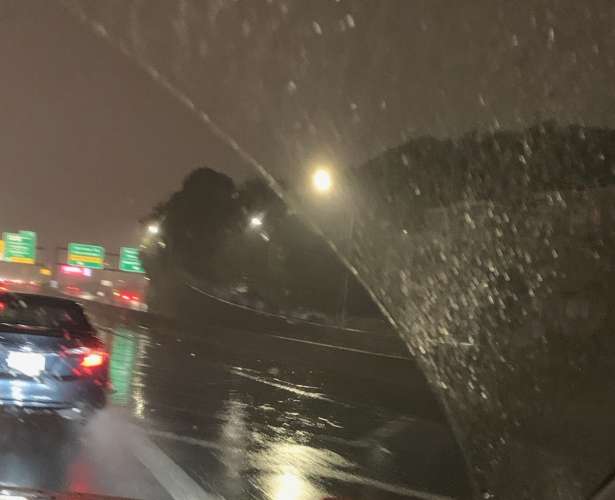
Other CrossClimate 2 Test Reports:
Initial Report (with MPG Changes)
Second Report (Confirms MPG and Discusses Handling)
Third Report (First Puncture and Prices)
Michelin CrossClimate2 Tire Owner Reports - Outstanding Winter Traction
Watch the Michelin CrossClimate2 Tire Tackle Ice-Slick Roads
Michelin CrossClimate 2 Test Report - Heavy Fall Rain
New Englanders can’t remember a year with more rain events than 2021. It seems to never stop. Luckily for us, this unprecedented wet weather has been a great time to test the Michelin CrossClimate 2’s wet-weather capability. The one-word summary is these tires are fantastic in heavy rain.
Related Story: Michelin Doubles Number of Sizes Available For CrossClimate 2 Tires
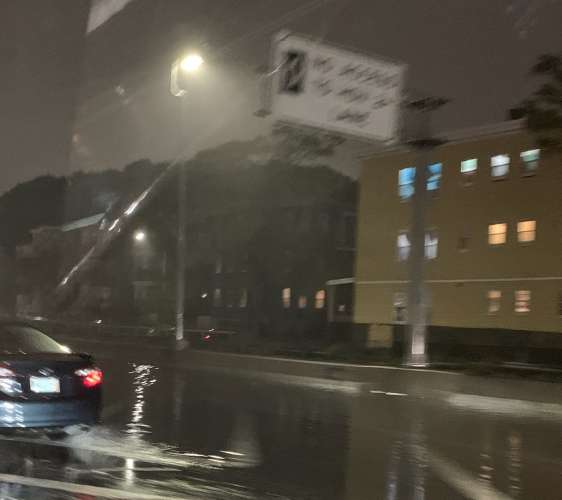
Last Saturday night the Boston area had a deluge that lasted all day. My wife and I needed to head into Boston from the suburbs after the storm drains had been leaf-choked and the roadways flooded anywhere the street dipped. The 'burbs that Saturday evening were quiet and uneventful, but the main highway (Route 93 South a.k.a. “The Expressway”) was a mess. Standing water meant that hydroplaning was a real concern. We needn’t have worried.
The deep treads of our CrossClimate 2 test tires have not worn noticeably in the months we’ve had the tires. In fact, they are what might be called “just broken in.” This is an ideal scenario for wet testing. Tires fresh on the car, or well-worn are never ideal in wet weather.
Subjectively, the tires seem to be the best all-season tires I’ve ever driven in wet weather. By comparison to many test vehicles shod with all-season rubber that I drive on a weekly basis, the CrossClimate 2 tires inspired more confidence in the heavy rain. And much more than the summer-only high-performance tires on the new European sports coupe I drove that same day.
Entering Boston, the deep potholes had been made worse than usual from the full day of heavy puddles and trucks slamming into them. The CrossClimate 2s took some hits but were undamaged. On the famous “River Roads” of Storrow and Memorial Drive, the low-lying areas were flooded to the degree that the road was reduced from two or three lanes to just one as people passed through standing water as deep as the door sills. The flooded areas looked to be hood-high in some areas we steered around. Broken down cars were here and there. Our test Mazda CX-5 crossover’s bit of extra ground clearance may have saved our bacon.
Stopping, turning, and staying free from hydroplaning was not a problem. If we could offer more scientific data on the tires we would, but ours is a real-world test, so we can only do our best to report what we experience.
Tire Rack rates the Michelin CrossClimate 2 a 9.5 out of 10 which it calls “Excellent” in wet performance. Based on our driving in heavy rain and flooding in suburban, highway, and urban scenarios, we can attest to that rating’s validity.
Watch Torque News for the much-anticipated snow test of the Michelin CrossClimate 2 tires. With the extremely wet year we have had in New England thus far, we suspect it won’t be long now.
Note: This is not a paid promotion. The original four tires were supplied by Michelin and were mounted and balanced at the author's expense. The fifth replacement tire following the puncture was paid for by the author.
John Goreham is a long-time New England Motor Press Association member and recovering engineer. John's interest in EVs goes back to 1990 when he designed the thermal control system for an EV battery as part of an academic team. After earning his mechanical engineering degree, John completed a marketing program at Northeastern University and worked with automotive component manufacturers, in the semiconductor industry, and in biotech. In addition to Torque News, John's work has appeared in print in dozens of American news outlets and he provides reviews to many vehicle shopping sites. You can follow John on TikTok @ToknCars, on Twitter, and view his credentials at Linkedin
Re-Publication. If you wish to re-use this content, please contact Torque News for terms and conditions.








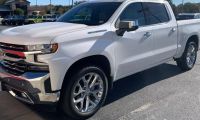
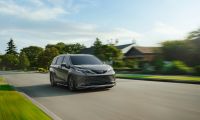
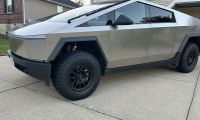
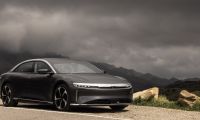

Comments
I've had V rated CC2's on my
Permalink
I've had V rated CC2's on my 2015 golf tdi since last June and have 42k miles on them. I also just bought the XL versions for my delivery van. Great tires on comfort, wet and snow, but there are exceptions in 2 areas. And if you drive 10+ hours on the highways you may see what I mean. Aside from tread noise on both vehicles which I can drown out with the radio, the straight line stability on the highway, especially at 80+ mph where I spend most of my time, is lacking. Both road cresting and crosswinds require a good amount of correction. The prior 2 sets of tires (Michelin defender H/T and Continental Pure Contact LS) were so much more stable. I'd say for most people the wet and snow performance may outweigh this. But for me being up and down the east coast and out to TN, stability on the highway is very important. One reason for this may be the lack of a central tread band. Watching tread studies, I see that at higher speeds, the center of the tread makes the most contact with the road. Due to centrifugal forces, the edges may rise off the pavement or at least have less force on the pavement. A continuous band gives you more stability. Also, the cc2s have a higher rolling resistance than the H/T and Pure Contacts. Mileage is between 2-3 mpg off. Both the H/T and Pure Contact LS felt so much freer on the highway that I need to watch my speed with them. They'll cruise at 90 mph if I'm not careful. The CC2's plateu at 75=80 so I feel as though I'm pushing the car to 80. BTW, because I buy tires so often and they're not cheap, I have alignments done with each new set of tires and actually had the dealer recheck it because I've never had this kind of instability from a Michelin at high speeds. Especially since these are V rated CC2's. I'm due for new tires before the winter and I'll probably push that forward before my next trip up and down the coast in June. The Pure Contacts have a more stable tread and Lower rolling resistance so I'll go back to those..
Thanks for your comment!
Permalink
In reply to I've had V rated CC2's on my by Greg (not verified)
Thanks for your comment!
I find they hydroplane very…
Permalink
In reply to I've had V rated CC2's on my by Greg (not verified)
I find they hydroplane very easily. They are not good in the rain at all.
Is there a left and right
Permalink
Is there a left and right mounting with this tread arangement?
Harry, thenCC2 tire is a…
Permalink
In reply to Is there a left and right by Harry (not verified)
Harry, thenCC2 tire is a directional tire so rotations will be front to back & vice versa only.
I have the CC2s on my 2022…
Permalink
I have the CC2s on my 2022 RAV4 Prime XSE. As noted above these tires are dead quiet on the highway and are really impressive with high-speed, straight-line stability. After 18k miles I tested them on a recent road trip and hands free at 80+ mph is excellent, dead straight all the time. Living in northeast Ohio I was also really interested in these Three Peak Mountain rated tires for good performance in the snow and cold. Maybe lost 1mpg compared to the OEM eco tires but difficult to measure. And really impressive traction in wet conditions!! And I cannot make them squeal on my favorite, local, decreasing radius, downhill, 180-degree highway on ramp! Of course, I'm not that brave to try higher speeds on that section of road.
In far south Texas a month…
Permalink
In far south Texas a month will pass without a drop of rain. Hence, when rain DOES fall the roads are particularly slick due to the petrol and oil that has accumulated on the roads during the dry month. The Cross Climate2 has ELIMINATED all loss of traction that normal torque caused in this situation. On the highways, they power through pooling water. Bravo, Bravo, Bravo. I couldn't be happier with these fine tires.